As I write this article in early July, I’m celebrating the beginning of a wonderful Independence Day weekend for our country, but also the emergence from the nest of a new-year-class of Bald Eagles. They are making their debut in the skies over the Fox River watershed! I have been closely following the progress of one family of Bald Eagles on Little Rock Creek just northwest of Hinckley, Illinois since late March. I have had the distinct pleasure and joy to watch the pair of devoted parents oversee their brood of three little (not so much anymore!) eaglets.
Way back in late February, the female of the pair began laying her eggs in the massive nest that she and her mate constructed in a tall cottonwood tree on the banks of the creek. Over the course of a week, she laid three eggs, each of them being laid about three days apart. She and her mate took turns incubating the eggs for the next forty days or so until their brood of three eaglets hatched, also over the span of a one-week period.

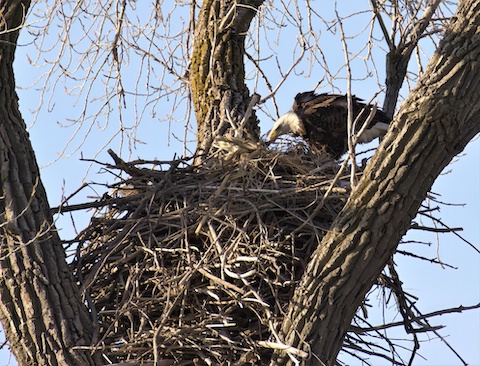
The New Eaglets Make Their Debut!
The hatchling eagles are about the size of a baseball and are covered with light gray, fuzzy, down. They have big eyes, a large beak, and comically large yellow feet for such a tiny creature! They’re so homely that they’re kind of cute! They are also extremely hungry! The little eaglets are helpless and totally dependent on their parents to provide them with food and to keep them warm and dry. Mom and dad eagle are kept very busy providing food for their fast-growing family! As the eaglets need to achieve their own independence by the winter, they grow very fast. Within five weeks they are about half-grown and, within twelve weeks of hatching (right about now), they reach adult size and are ready to fledge!
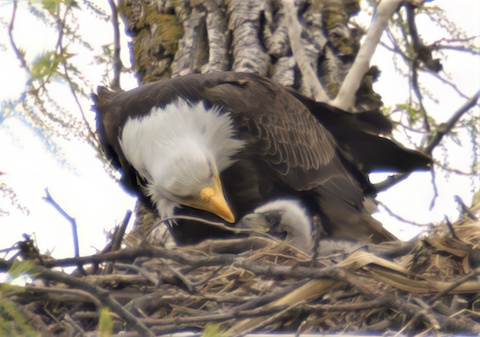
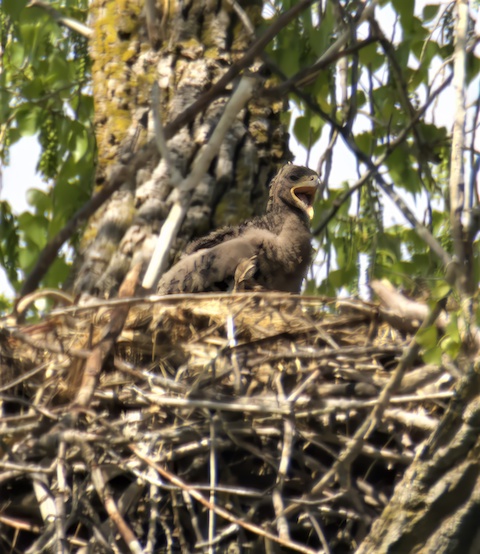
calls loudly for food from the rim of the nest. These little guys are always hungry.
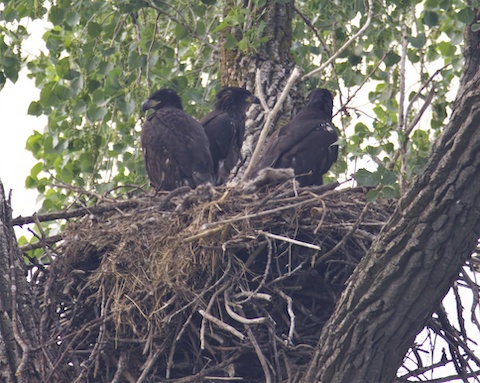
The Early Flights
Their first flights are exciting times for the eaglets and people viewing them. The early flights don’t always end well and sometimes the youngsters end up on the ground before they had planned. This is normal and the juvenile eagles are well-equipped to take care of themselves being ground-bound for a while. Practice makes perfect and the young eagles quickly become adept fliers. They don’t become adept hunters at the same rate though and Mom and Dad still have to provide food for them for four to six weeks after they fledge. At the nest I’m observing on Little Rock Creek, the nest became the feeding station. The adults bring their catch back to the nest and the juveniles come there to eat, even though they don’t spend much (if any) of their time in the nest on a regular basis after fledging. It’s fascinating to watch!
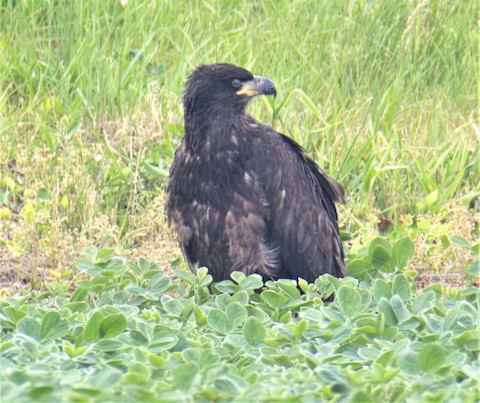
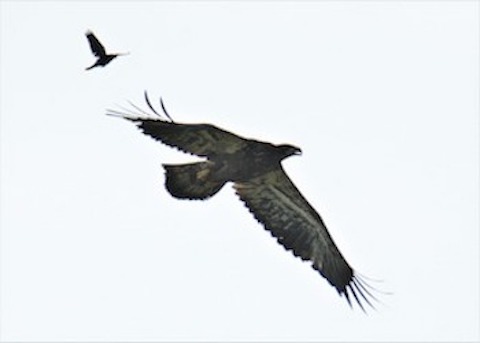

“They Don’t Look Like Bald Eagles…”
Even though the young eagles have reached adult size in twelve weeks, they don’t take on the adult’s typical appearance for about five years, when they become sexually mature and ready to breed. Instead of having the brilliant white head and tail feathers and dark, chocolate brown feathers on the adult’s body, the juveniles have slightly lighter brown plumage with mottled white underwing markings. Instead of the brilliant yellow beak of the adults, their beaks are black near the tip, transitioning to a subdued yellowish-gold toward their base. Also, instead of having the clear yellow iris of the adult eagle’s eye, they have a brownish iris. Some of the juvenile eagles’ feathers are longer than the adults’ which can make the young eagles appear even larger than their parents!
Because their physical appearance is so different from their parents’, quite a few people don’t recognize the juveniles as eagles. They think that the eagles are very large hawks! Just yesterday when I was out at the nest taking photographs and videos, a gentleman walked past me and asked what I was doing. I replied, “Right now, taking a video of an empty eagle nest.” He told me he had just seen the largest hawk he had ever seen fly into the tree right next to the road he was walking along, just downstream from the nest tree! I had seen the juvenile eagle returning from one of his flights in that tree just as the fellow was passing by. He was amazed when I told him the “hawk” he saw was actually a young eagle. The gentleman then said that he didn’t know that Golden Eagles lived in our area. I replied that, while Golden Eagles are very occasionally spotted here, what he had seen was definitely a juvenile Bald Eagle. It’s an easy mistake to make as the young Bald Eagles look nothing like their parents and won’t for four more years! Each year, as the young eagles moult, their appearance changes slightly. Those slight changes in appearance are a guide to observers that can be used to determine their age.

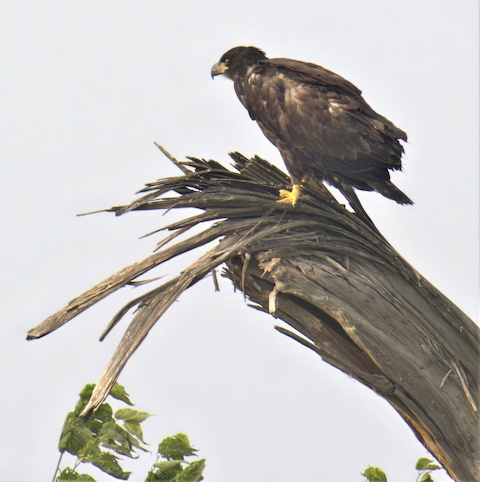
Conclusion
As you’re out and about in the Fox River area this summer, keep an eye to the sky! You may just be lucky enough to spot a juvenile Bald Eagle flying past! It’s a remarkable tribute to the improvements made to the ecological health of our watershed over the years that these magnificent birds have resumed breeding here! Until next month, enjoy the natural wonders the Fox River watershed provides and have a happy summer!
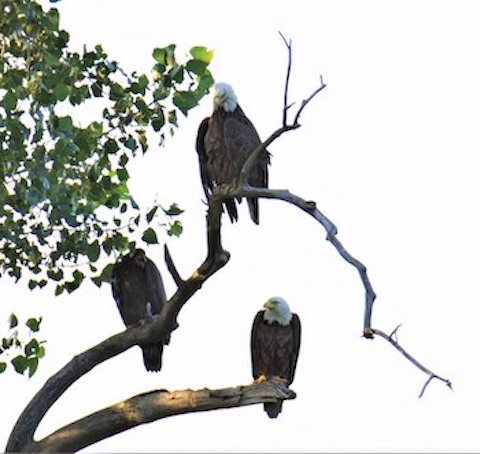
a tree near the nest along Little Rock Creek.
This photo was taken on July 4th, 2023. It was a nice Independence Day treat for me!
